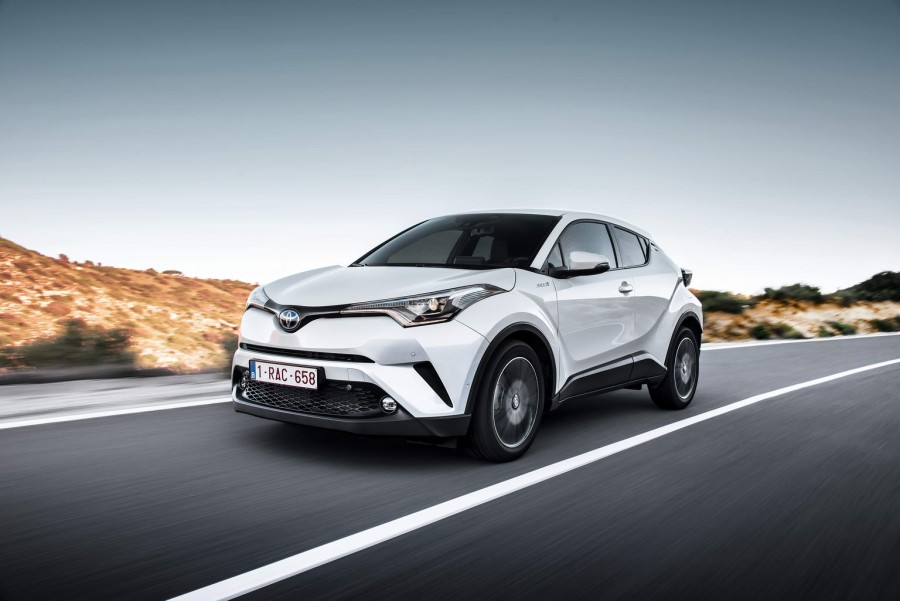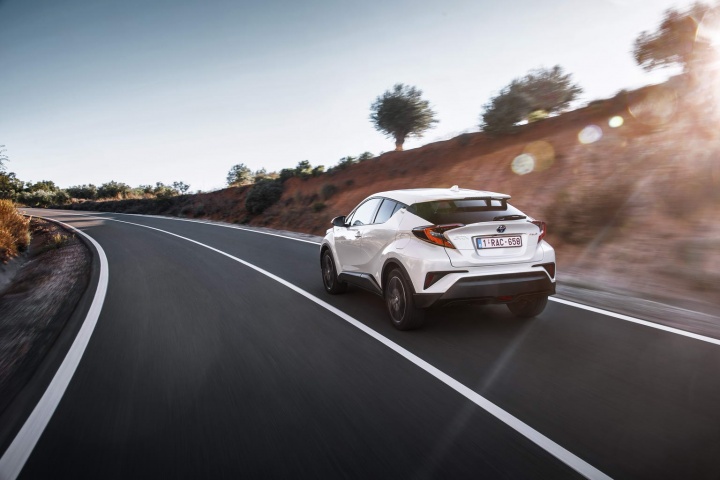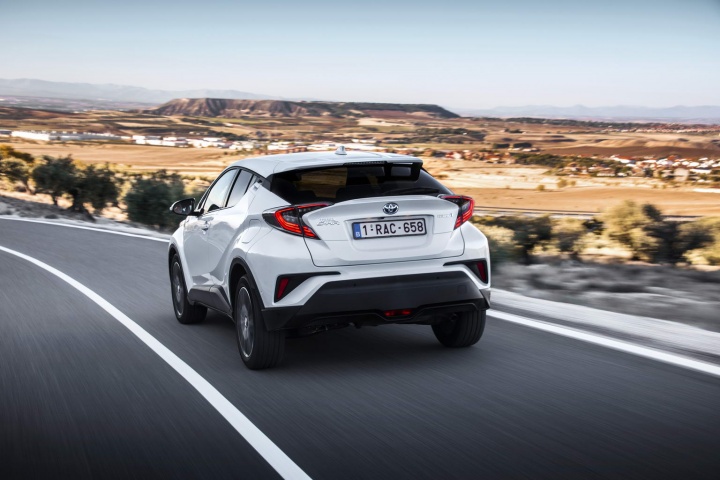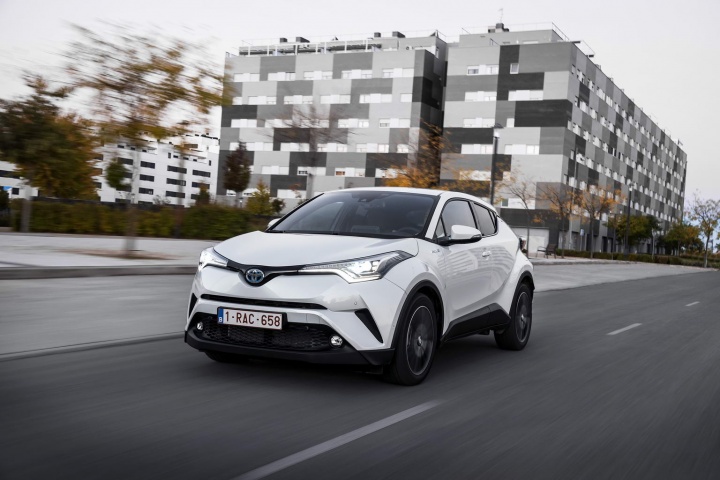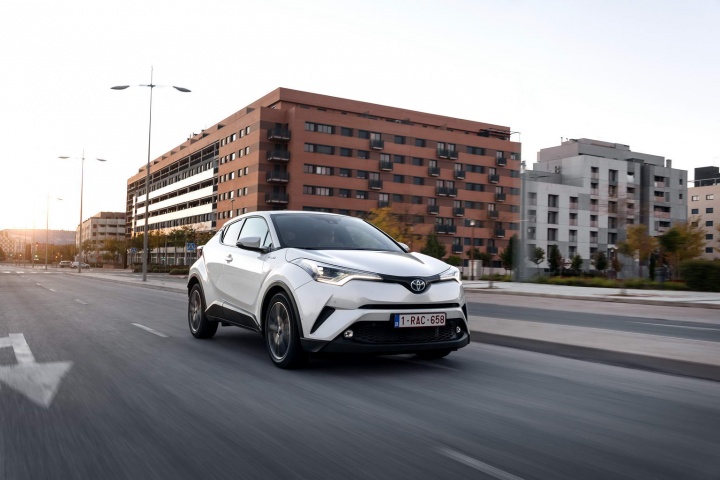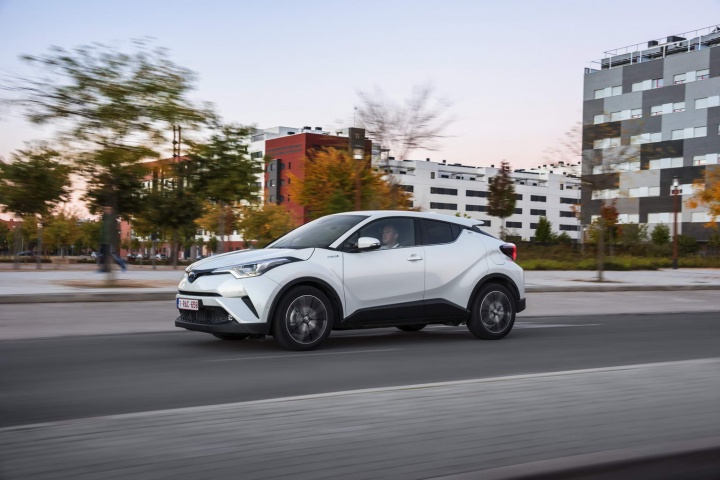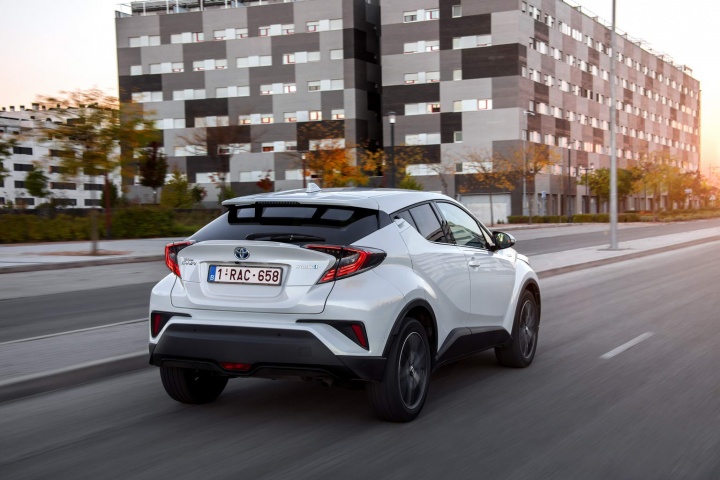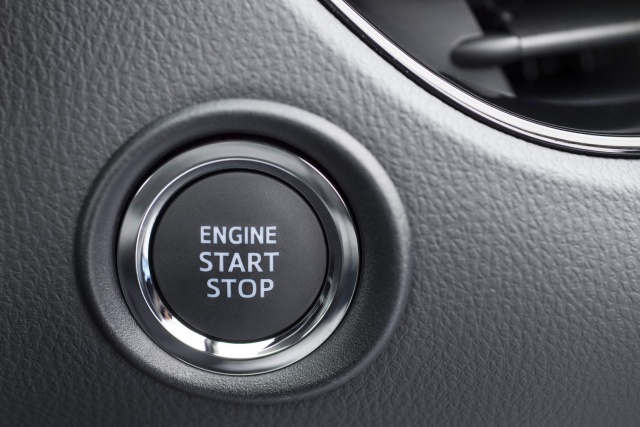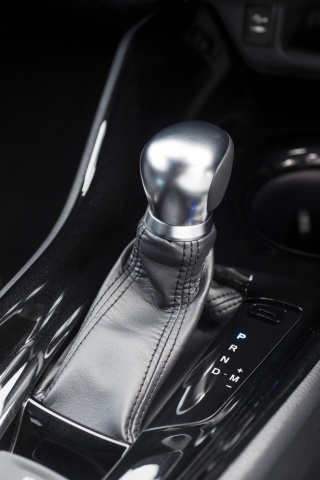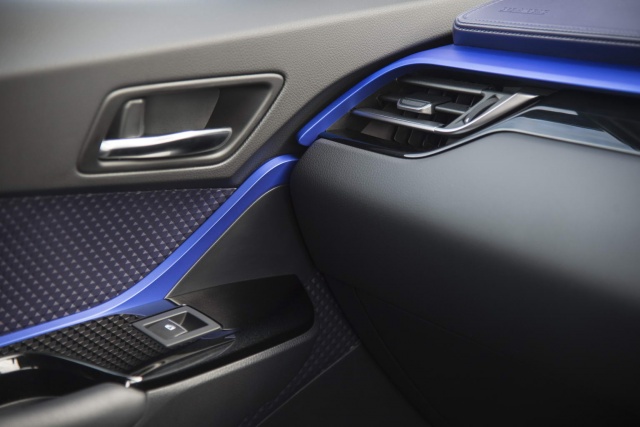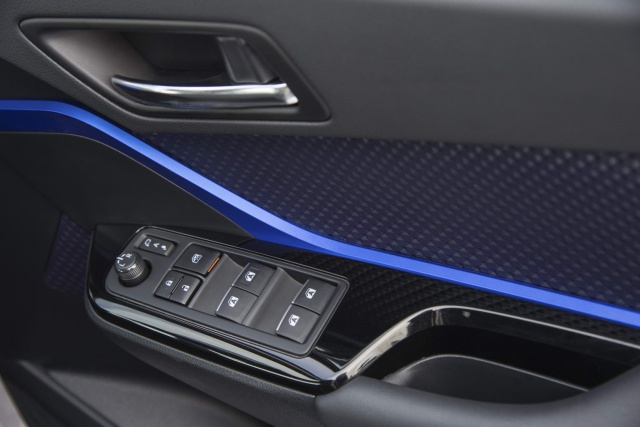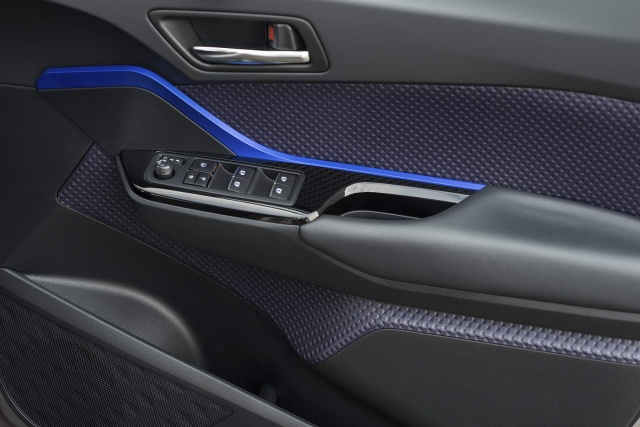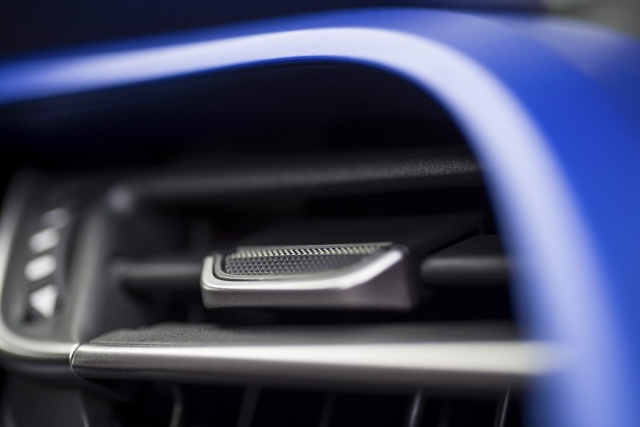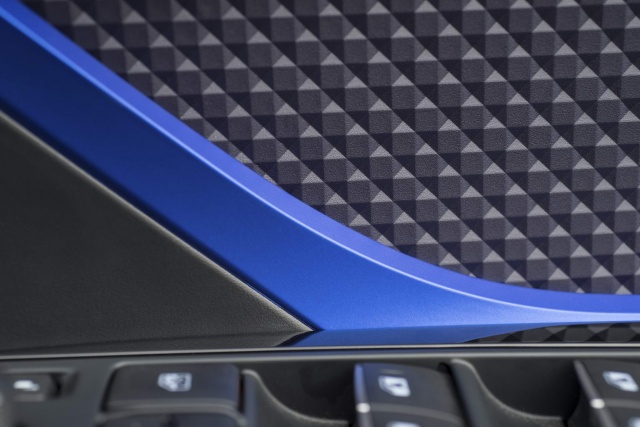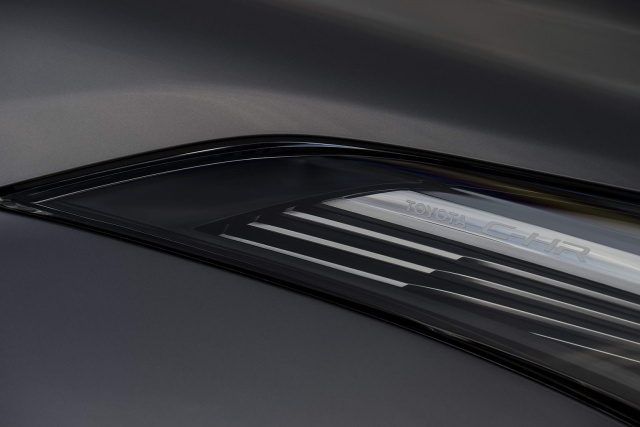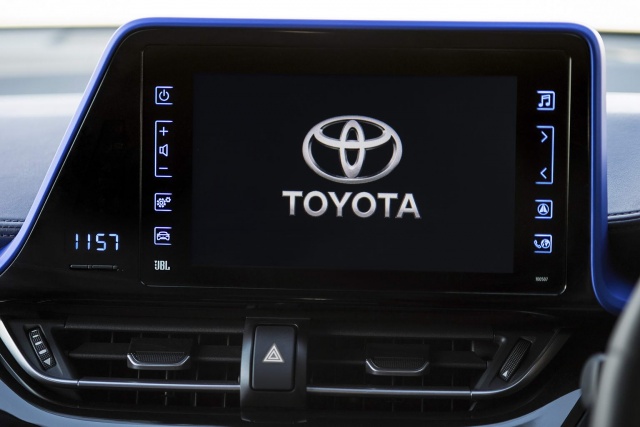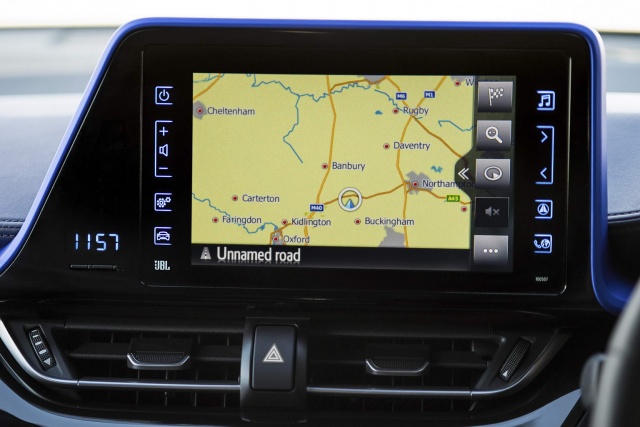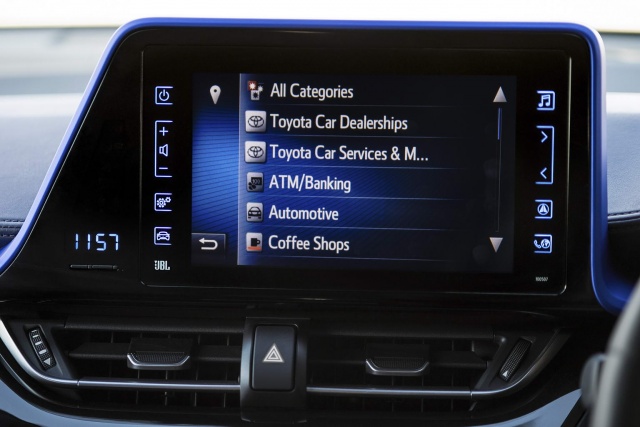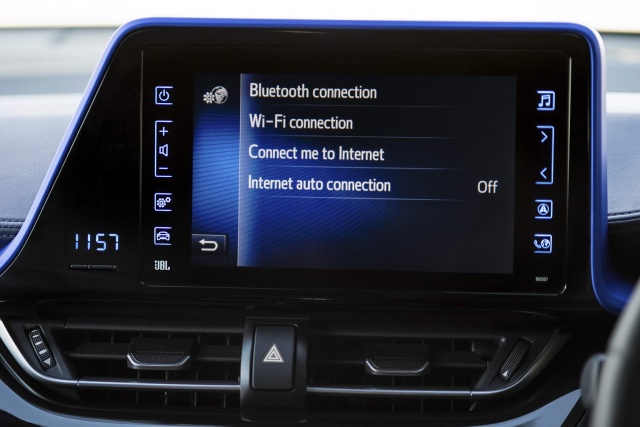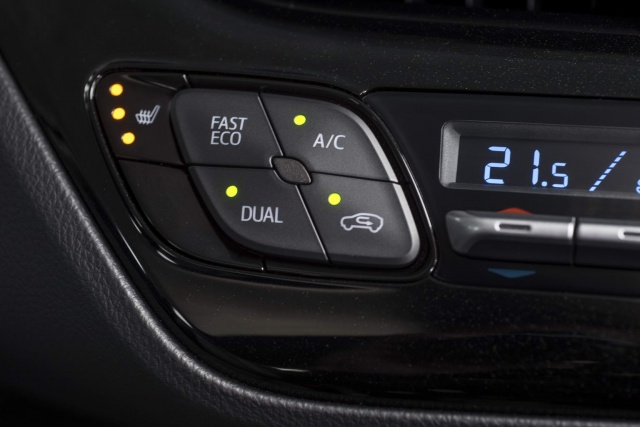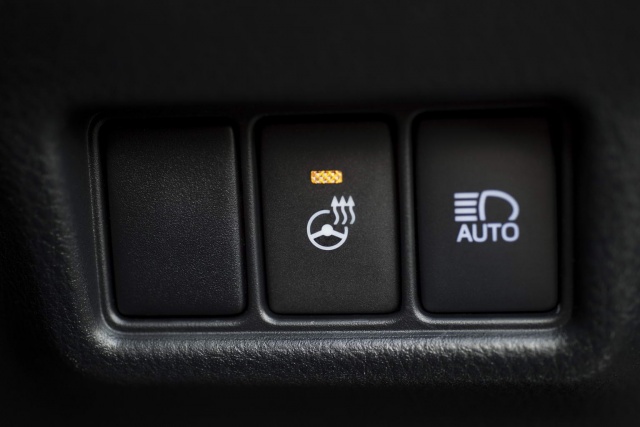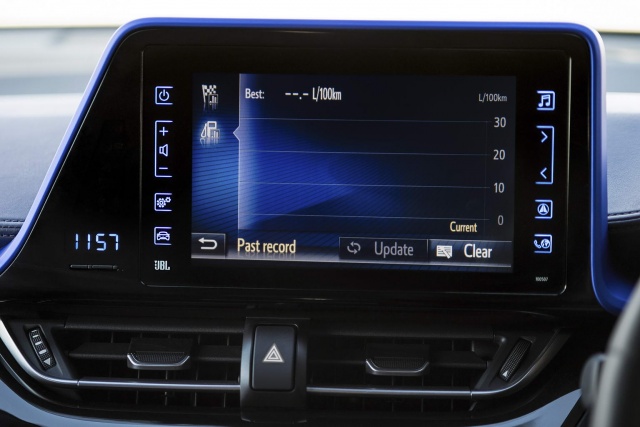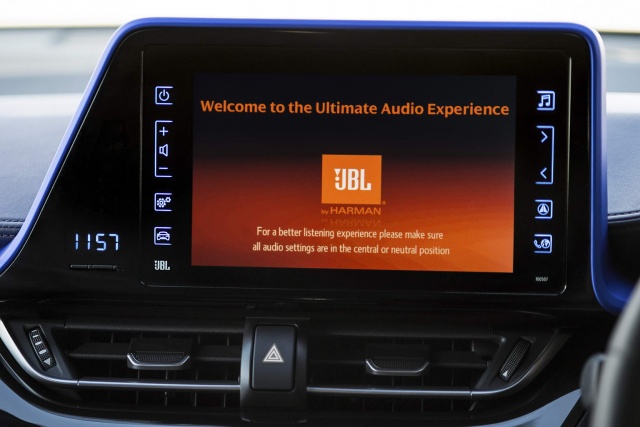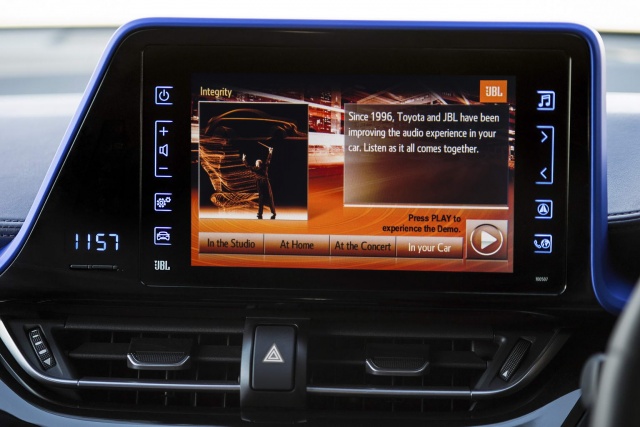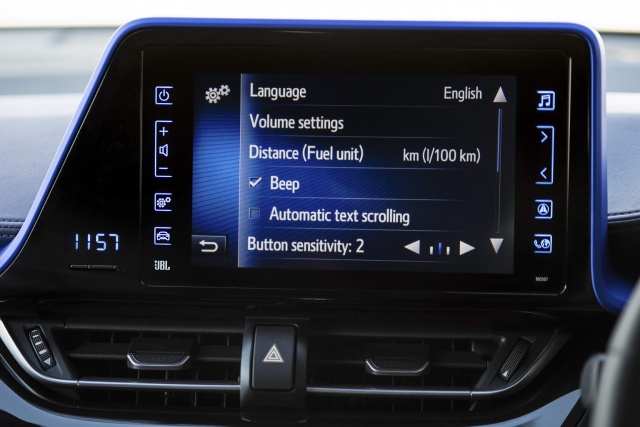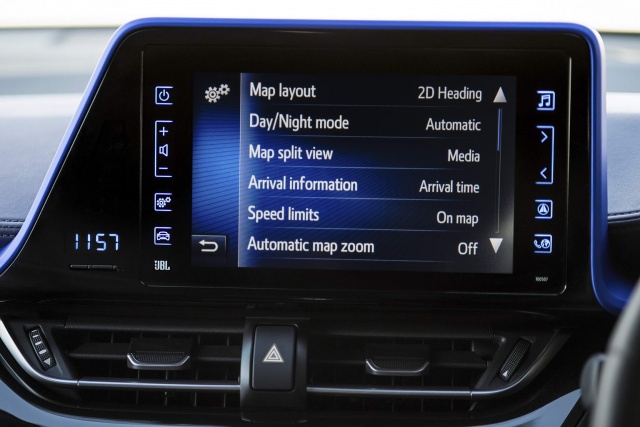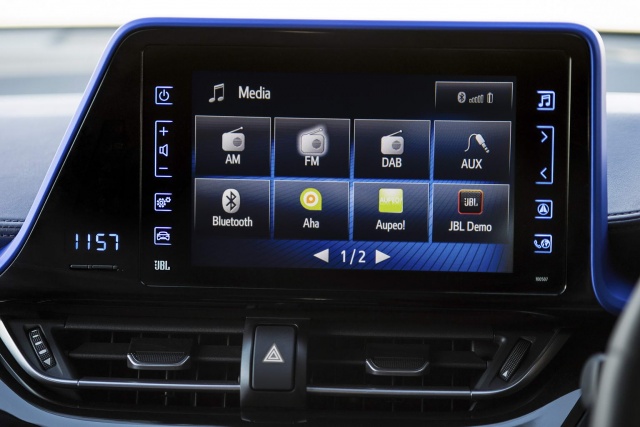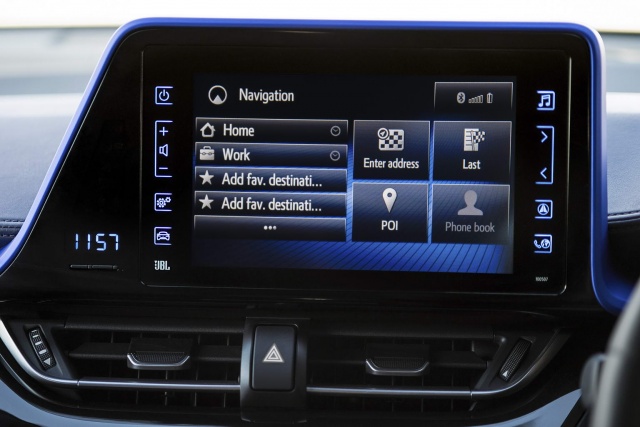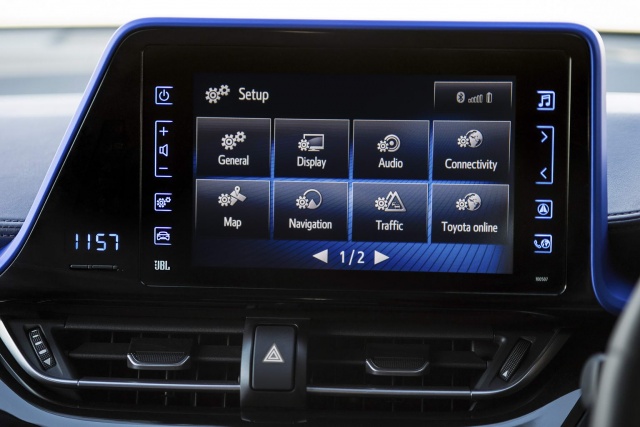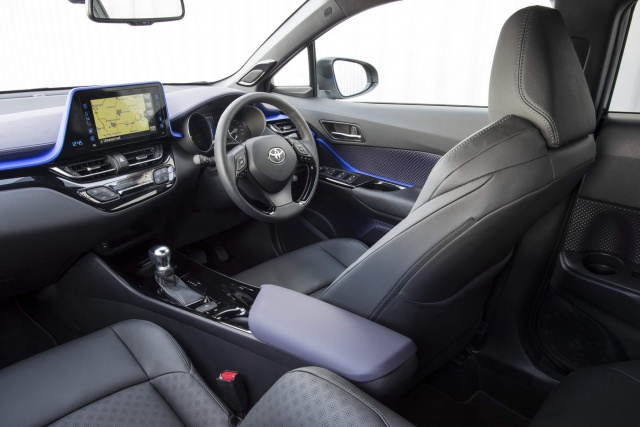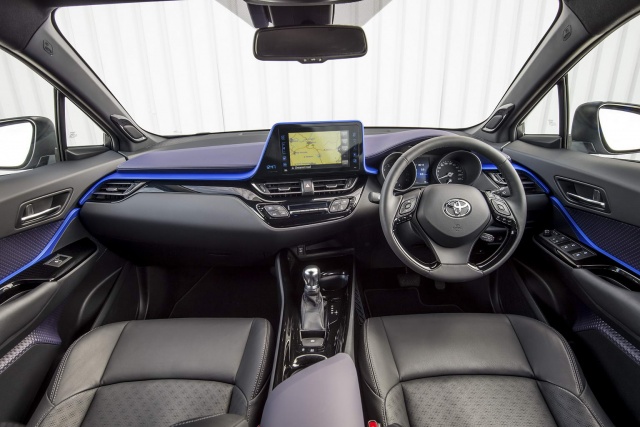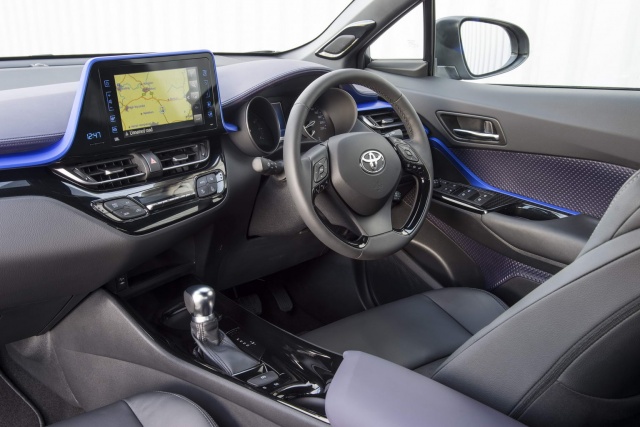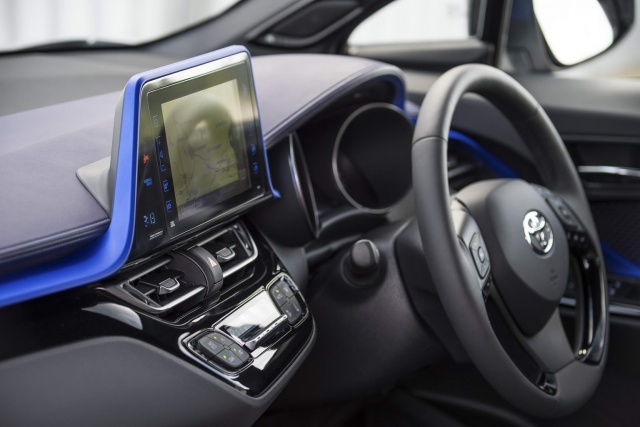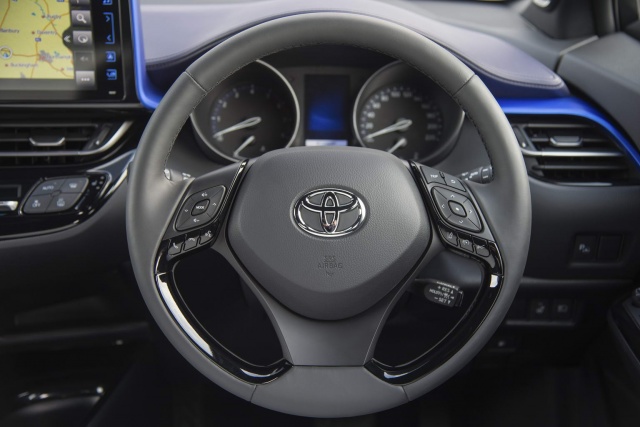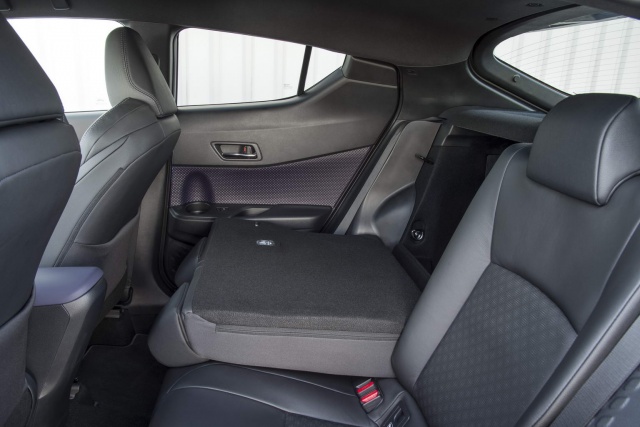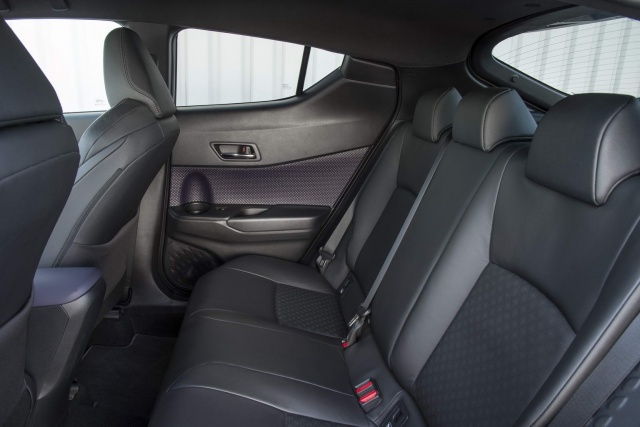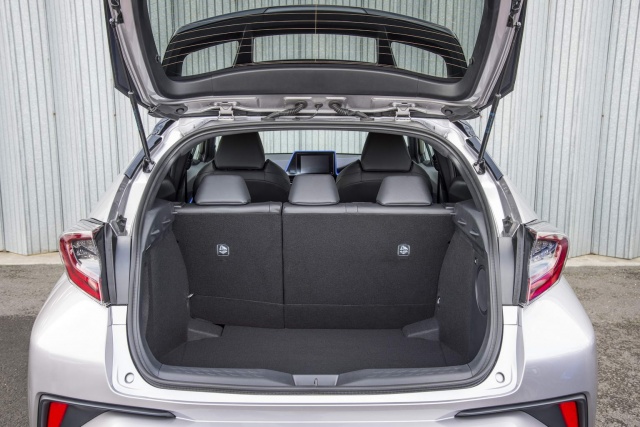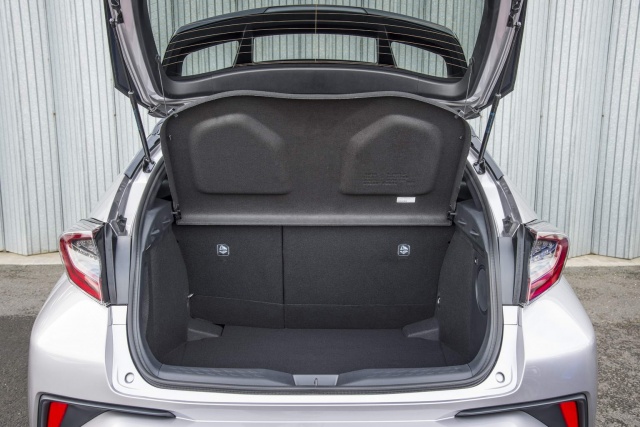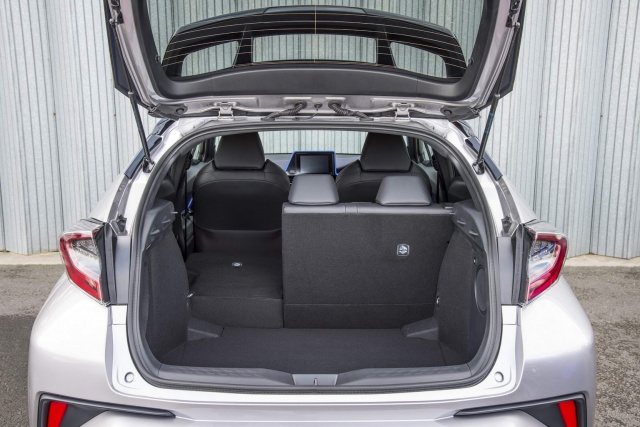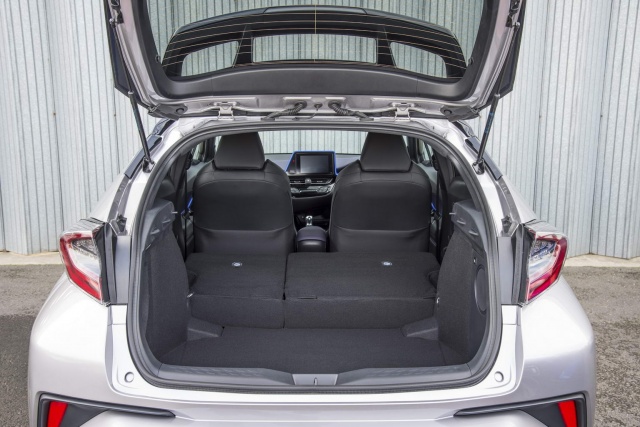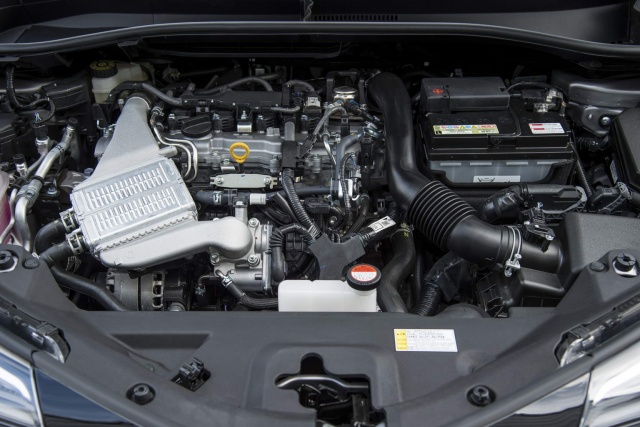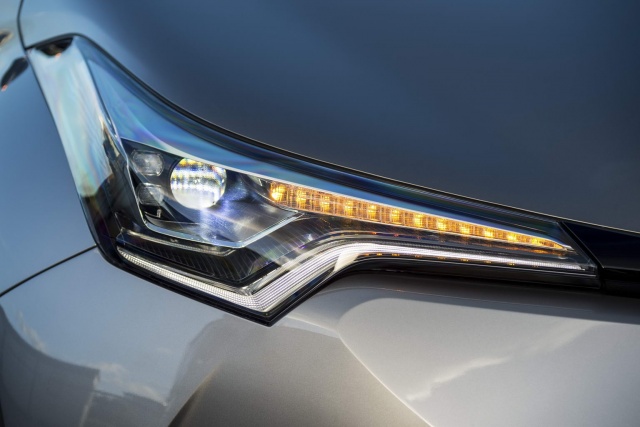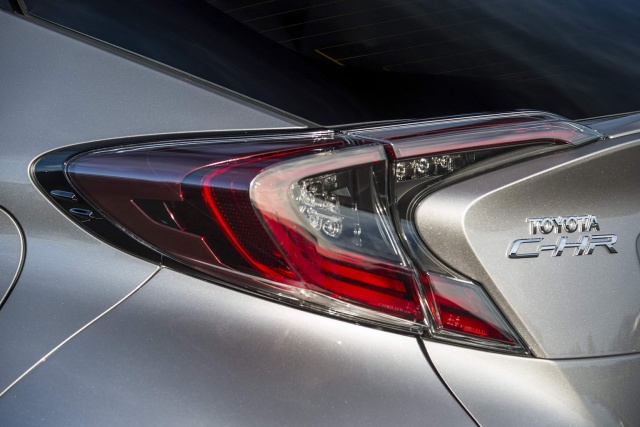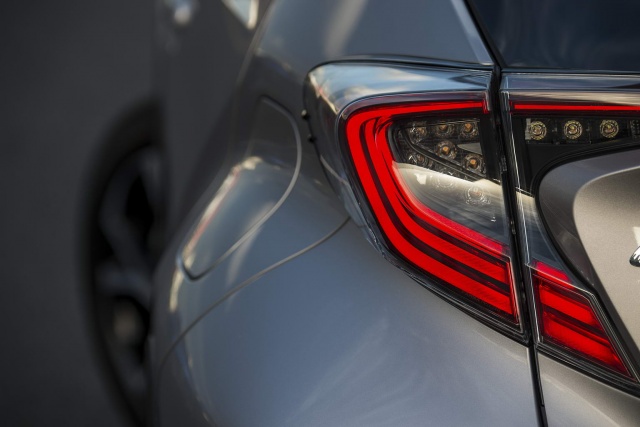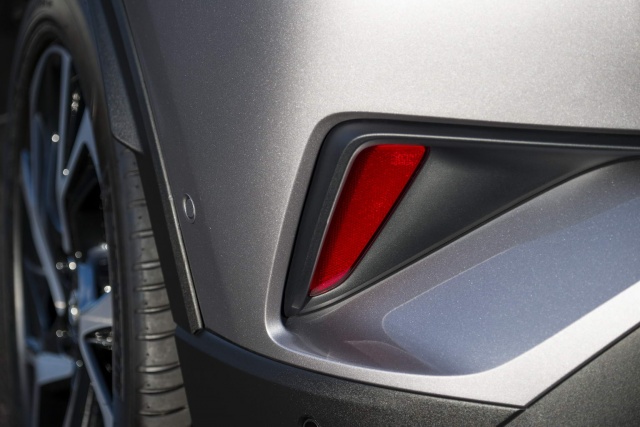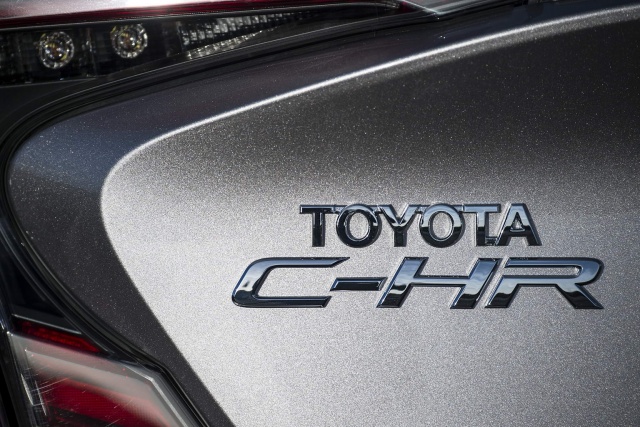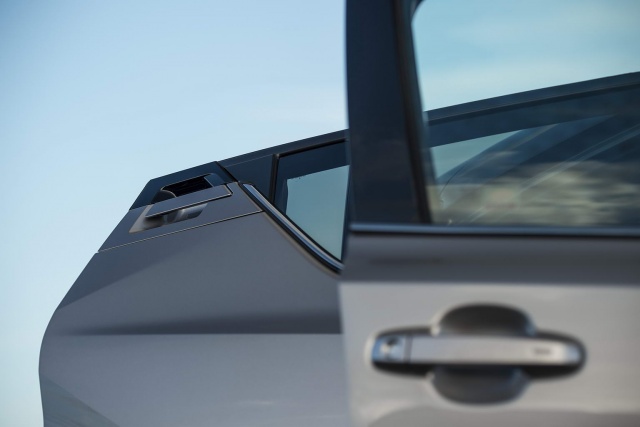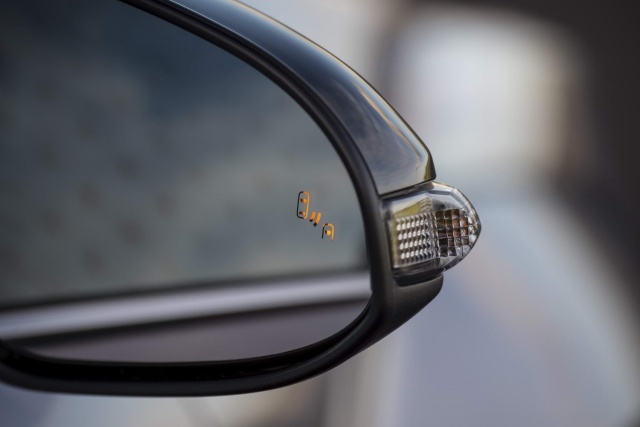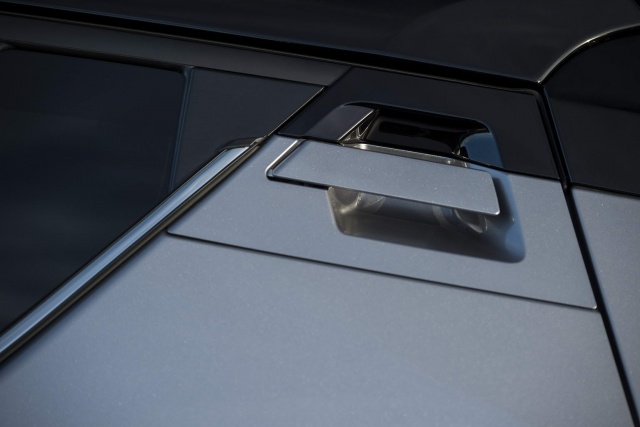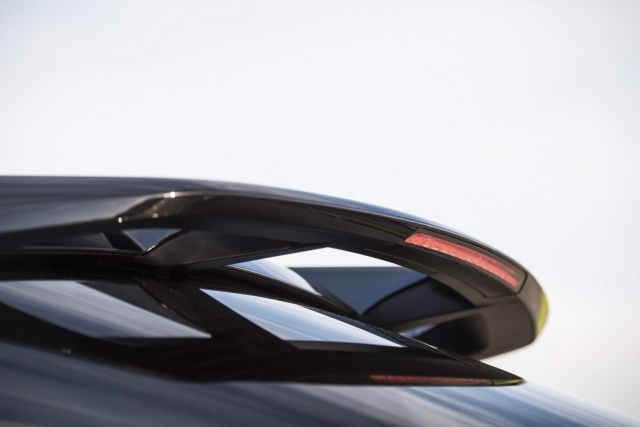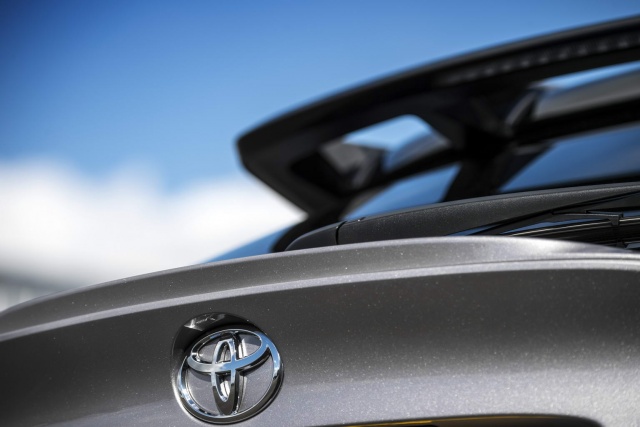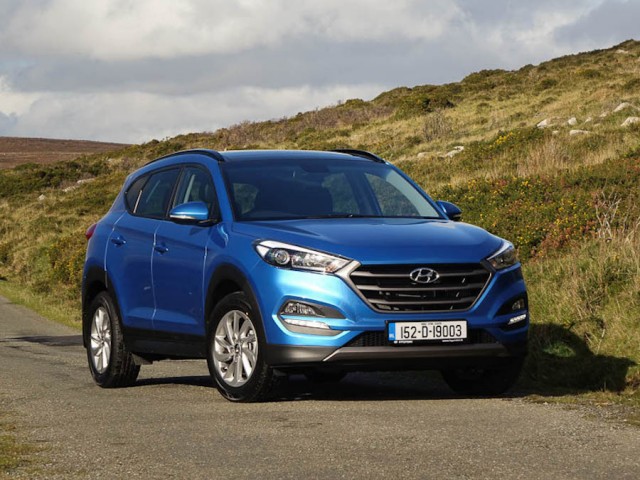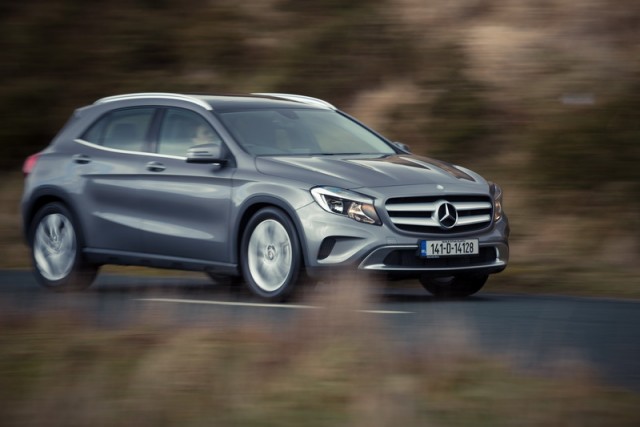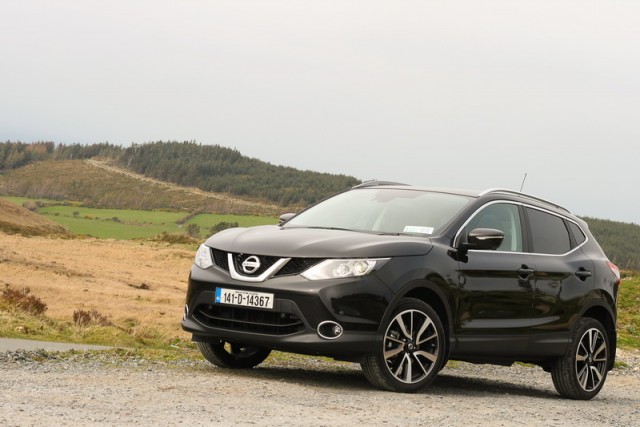The green shoots of Toyota's recovery from bland to interesting - first seen with the introduction of the GT86 sports car - are blossoming now with this excellent C-HR SUV. Incredible looks, a fabulous interior and a superb chassis underpin this distinctive crossover and, although this Hybrid example (expected to be the big seller) is absolutely fine, the real gem is the 1.2-litre manual version. Whichever model you pick, this alluring 'Coupe High-Rider' should shake up the largely conservative C-segment SUV market.
In the metal
Wow. Say what you like about the styling being a bit busy, but Toyota is to be highly commended for launching such an aesthetically daring machine as the C-HR onto the market. It's a riot of curves, slashes, edgy lines and interesting little touches, and while we fully accept it won't be everyone's cup of tea, we're happy to admit we absolutely love it. It's a bona fide concept car ported wholesale from a motor show stand direct to the public roads and as a result it has an extraordinary ability to turn the heads of fellow motorists; job emphatically done, then, for Toyota, which is targeting a new, younger demographic with the C-HR - buyers that pride themselves on being early adopters. If they've got any sense, they should snap this thing up.
The best news is that, once you open the C-HR's doors and climb aboard, you're not subjected to an anti-climax. This is Toyota's best cabin since, well... forever. The Japanese company has put real effort into upping the quality and ambience of the C-HR's passenger compartment, and it truly shows. We're not saying there aren't a handful of duff points, but Toyota's been very clever about putting the cheaper materials in places you're not likely to touch. For example, there's a lovely, soft padded lozenge of leather that sits full-width across the top of the dash - reach beyond it, almost to the base of the windscreen, and behind is some flimsy charcoal plastic, but in reality you're never going to stretch right forward in the car, are you?
Otherwise, the main touchpoints and visuals are all brilliant: things such as the Nappa-clad steering wheel; the new, smart climate controls on the heavily driver-angled centre console; a recurring diamond motif for various switchgear, repeated with indents in the headlining above the front-seat occupants; the clear displays in the instrument cluster; the sharp touchscreen infotainment display atop the dash; and that snazzy design motif of a line that runs from the door cards, across the console and over the navigation screen. Sure, old blue LCD digits in a few places and a really strange, brittle diamond-patterned plastic coating the doors near the grab handles are further minor niggles, but overall we thoroughly approve of the quality, appearance and layout of this accomplished cockpit.
If there's a bigger criticism of the C-HR's interior, it's that there are a few compromises wrought by that swooping, descending roofline and the wonderful exterior styling. But they're not the obvious drawbacks. Legroom and headroom are actually fine for tall-ish rear-seat occupants - despite its compact appearance, the C-HR is a C-segment-sized machine that's designed to take on the likes of the Nissan Qashqai and Renault Kadjar, rather than their Juke and Captur models - and there's a decent, 377-litre boot out back irrespective of that steeply sloping rear hatch. No, the issue is more that visibility out of the Toyota is severely hampered by the upswept rear door and, conversely, there's not much light coming in via the narrow windows, so it's dark back there. Claustrophobes need not apply for journeys in the back of the C-HR. Oh, and don't expect to see much out of the rear three-quarters if you're the driver, either.
Driving it
Before we get onto the Hybrid, it's worth just mentioning the 1.2-litre petrol - because it's a little jewel. The engine is sweet as a nut and the gearbox is a belter, as it features Toyota's Intelligent Manual Transmission (IMT). This rev-matches not only on downshifts, but also upshifts, in order to make the drive as smooth as possible. It's not a quick car, the 1.2, what with it having just 116hp and 185Nm, but what it does have is a sprightly chassis that has magnificent turn-in (for a crossover), top-notch body control, nicely weighted and responsive steering (it lacks feel, though), strong brakes and a fantastic ride. Honestly, it's a hugely likeable vehicle and we think it deserves to do better than being a one-in-four car on the C-HR's sales sheets. It also points the way to a more powerful petrol model coming in the near future, the rumour being that a 150hp 2.0-litre normally aspirated unit could soon find its way under the bonnet. Not that we'd expect that to sell in big numbers here.
Which brings us on the Hybrid, ostensibly the range-topper for now. It preserves much of the 1.2's handling vivacity, but it is noticeably blunted by the extra weight the Hybrid has to carry (1,380kg vs. 1,320kg), which means it's slightly less keen to get its nose into the apex of a corner. The 1.8 also has more of a propensity to lean if it is asked to corner hard, so it feels less sporty than the 1.2 and more like an equivalent, regular SUV of this class.
The Hybrid's lack of appetite for dynamic shenanigans does mean that you don't thrash its engine quite so much, which is a good thing because it's another of those rather uncultured four-cylinder CVT drivetrains that make up Toyota's eco offerings. However, we would go so far as to say this is one of the better examples of the marque's beloved technology, because the E-CVT (a planetary gear set) is pretty keen to respond to throttle inputs. You still get that harsh 'over-revving' when you ask for full power, the VVT-i 16-valve petrol unit sounding coarse, but there's less of a disconnect between the increase in noise and the rate of forward acceleration than there used to be in hybrid Toyotas.
Driven more sedately, the Hybrid is hugely refined and of course it can move for limited periods of time in zero-emissions, full-electric mode. There are no interior compromises on space due to the packaging of the twin electric motors and the placement of the nickel-metal hydride (NiMH) battery, and even pushed reasonably hard on a mixed route the C-HR gave back 6.5 litres/100km (43.5mpg), so driven in a style more befitting of its green ethos, we'd expect it to use more like 4.5- to 5.0 litres/100km (56.5- to 62.8mpg). With its comfortable ride and agreeable driving manners, the C-HR in any guise is therefore a crossover that manages to pack a lot of substance with its indisputable style.
What you get for your money
Here in Ireland we get three trims (Luna, Luna Sport and Sol) and the same two launch engines as the rest of Europe - these being a 1.2-litre turbocharged petrol unit and the obligatory Toyota Hybrid variant, powered by a derivative of the 1.8-litre Atkinson-cycle petrol engine with electric support as found in a Toyota Prius. That's right, there's no diesel option for the C-HR and there's unlikely to be one forthcoming, either, so if you value fuel economy you're going to have to plump for the Hybrid. Toyota fully expects the 100,000+ units sold Europe-wide in the first year to be split 75/25 per cent in favour of the electrified C-HR and that trend towards the Hybrid is likely to be confirmed here in Ireland.
Other technical points include the fact this is the second Toyota, after the current Prius, to be based on the company's New Global Architecture (TNGA) platform, with the C-HR's wheelbase slightly shortened and its track marginally widened compared to said Prius, while we won't get the solitary all-wheel drive model (the 1.2-litre with a CVT gearbox). That means an entirely front-wheel drive, six-car Irish line-up of the 1.2T petrol with the manual transmission and the E-CVT-equipped Hybrid, with prices starting at €26,895 for a 1.2 Luna and rising to €32,950 for a Hybrid in Sol specification.
Apart from its traffic-stopping looks and smart interior, the C-HR comes with a strong standard specification, plenty of safety equipment and the ability to add some high-end toys as you move up the range. All variants get dual-zone climate control, the Touch 2 multimedia screen, auto lights and wipers and alloy wheels. Lavish equipment such as Adaptive Cruise Control, Intelligent Park Assist, leather upholstery, keyless entry and go, heated seats and steering wheel, and much more, can all be added, making its purchase price appear more reasonable - it's a little more than the aforementioned Nissan Qashqai and Renault Kadjar ranges start at, but considerably less than the likes of the premium C-segment crossovers, such as the Mercedes-Benz GLA, Audi Q2 and BMW X1, from which Toyota is hoping to poach a few conquest sales with its dramatic newcomer.
Summary
This is a Toyota we can genuinely love. Obviously, with the brand's devotion to hybrids, it's the part-electric model that will cream the sales in the order of roughly three-to-one, but the 1.2 is a really cracking little crossover that drives (almost) as good as it looks. It doesn't matter which drivetrain you choose, though, because five minutes spent in the C-HR's company is enough to tell you that this is easily Toyota's best and most appealing model since the GT86. It points to a bright future for the Japanese company. Bravo, Toyota.

